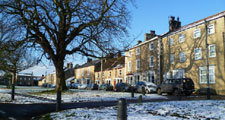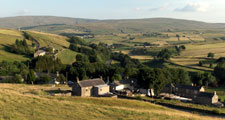Buildings and Settlements
Over much of lowland Durham mining towns and villages dominate the settlement pattern. They vary in scale from small hamlets to large towns and are scattered across the limestone plateau and the valleys of the exposed coal measures, giving parts of the landscape a densely settled or ‘semi-rural’ character.
This 19th and 20th centuries, industrial settlement pattern overlies and largely obscures an older nucleated settlement pattern of small ‘green’ villages of medieval origins which survives in the less industrialised lowlands and upland fringes and in the lower dales. Associated with this long established agricultural settlement pattern are larger market towns like Barnard Castle. In parts of the rural Tees Lowlands there are few villages today, but there are numerous shrunken or deserted village sites which belong to this older pattern.
The higher uplands remain largely free of settlement, fringed by areas of dispersed farms on land enclosed from the wastes in the 18th and early 19th centuries. Building clusters and the scattered farms of miner-smallholders are particularly characteristic of the middle and upper dales and some of the more remote parts of the coalfield.
Older villages often have a relatively regular layout with buildings set around a central village green. Buildings are of local stone with roofs of stone flag or welsh slate in the uplands and upland fringes, and slate or red pan tile on the lowland clays. In the Pennine Dales many old agricultural villages of their vernacular upland character. Market towns and some of the larger older villages like Sedgefield and Lanchester have developed outwards from their older core and contain buildings from many different periods.
Mining and industrial towns and villages vary in character. Most contain Victorian terraces of brick or stone and areas of 20th century public estate housing. Some are built around the core of an older agricultural village.



